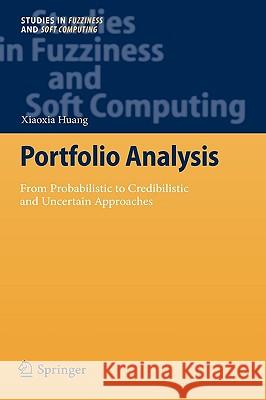Portfolio Analysis: From Probabilistic to Credibilistic and Uncertain Approaches » książka
Portfolio Analysis: From Probabilistic to Credibilistic and Uncertain Approaches
ISBN-13: 9783642112133 / Angielski / Twarda / 2010 / 182 str.
Portfolio Analysis: From Probabilistic to Credibilistic and Uncertain Approaches
ISBN-13: 9783642112133 / Angielski / Twarda / 2010 / 182 str.
(netto: 384,26 VAT: 5%)
Najniższa cena z 30 dni: 385,52 zł
ok. 22 dni roboczych
Bez gwarancji dostawy przed świętami
Darmowa dostawa!
The most salient feature of security returns is uncertainty. The purpose of the book is to provide systematically a quantitative method for analyzing return and risk of a portfolio investment in di?erent kinds of uncertainty and present the ways for striking a balance between investment return and risk such that an optimal portfolio can be obtained. In classical portfolio theory, security returns were assumed to be random variables, and probability theory was the main mathematical tool for h- dling uncertainty in the past. However, the world is complex and uncertainty is varied. Randomnessis nottheonly typeofuncertaintyinreality, especially when human factors are included. Security market, one of the most complex marketsintheworld, containsalmostallkindsofuncertainty. Thesecurity- turns are sensitive to various factors including economic, social, political and very importantly, people's psychological factors. Therefore, other than strict probability method, scholars have proposed some other approaches including imprecise probability, possibility, and interval set methods, etc., to deal with uncertaintyinportfolioselectionsince1990's. Inthisbook, wewantto addto thetools existingin sciencesomenewandunorthodoxapproachesforanal- ing uncertainty of portfolio returns. When security returns are fuzzy, we use credibility which has self-duality property as the basic measure and employ credibilitytheorytohelpmakeselectiondecisionsuchthatthedecisionresult will be consistent with the laws of contradiction and excluded middle. Being awarethat one tool is not enough for solving complex practical problems, we further employ uncertain measure and uncertainty theory to help select an optimal portfolio when security returns behave neither randomly nor fuzzily. One core of portfolio selection is to ?nd a quantitative risk de?nition of a portfolio investment.











